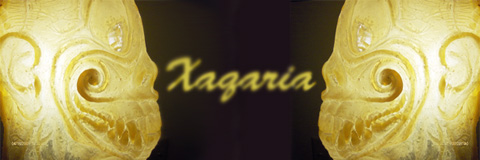Wave-Particle Duality Continued/conclusion
So, in my last big post I described how all matter and energy exhibits both the properties of waves and particles. A man named John Archibald Wheeler came up with a very interesting thought experiment which has since been verified by empirical trials in which the effects of an observer's choice to view the outcome of an experiment has an effect on the output even after the event has occurred. Wheeler reasoned that if a situation could be set up in which one had the option of 'looking' at whether a particle went through one or both slits in a double slit set up after it went through, their decision would still have an effect on what it had done, even though logically the event is already past. Logically, this concept seems absurd, but it made sense based on certain interpretations of these sorts of experiments (namely, the Copenhagen interpretation) and also in the mathematical description of the experiments.
As I said, this experiment has been performed several times and it is now known that this strange phenomenon is in fact a reality. Even if one were to delay the 'choice' over an extremely long time line, the actual outcome is still affected by whether or not the particle is observed, even though what the particle has actually done happened well in the past.
Ok, so what does this all mean? No one knows exactly why everything exhibits these conflicting properties but so far, there are two main interpretations that I will describe extremely briefly, but will provide links if anyone wishes to look in to them further. The first option is that there is a collapse of the wave form into a particle after certain conditions are met. The conditions are either deterministic ones; ones in which a particle or system is required to have certain characteristics by the casual chain of events in which it is involved, and this can be just about anything as described by classical physics, or systems that are in a quantum state are shown to collapse only when an observation of their characteristics is performed.
The other most popular interpretation is known as quantum decoherence. The theory of decoherence basically says that any observation causes the appearance of collapse, but that everything still remains in a quantum superposition wave form state and we are simply unable to make measurements of all of the other possibilities now that they are in the past. This interpretation is very similar to the "many worlds" interpretation and in fact the two do not contradict each other. A very simplistic way of describing this theory is that everything is always in a state of quantum fluctuation, but our view of the world only allows us to look directly 'backwards' through the waves of possibility and not 'forwards' or 'side to side' thus giving the appearance of a linear chain of events. In reality, every moment of the present and future is a sea of infinite possibility and it is only the past that is determined by the observers particular vantage point in that infinite sea.
Wave Function Collapse
Quantum Decoherence
|
|









 LinkBack URL
LinkBack URL About LinkBacks
About LinkBacks




 Reply With Quote
Reply With Quote
Bookmarks